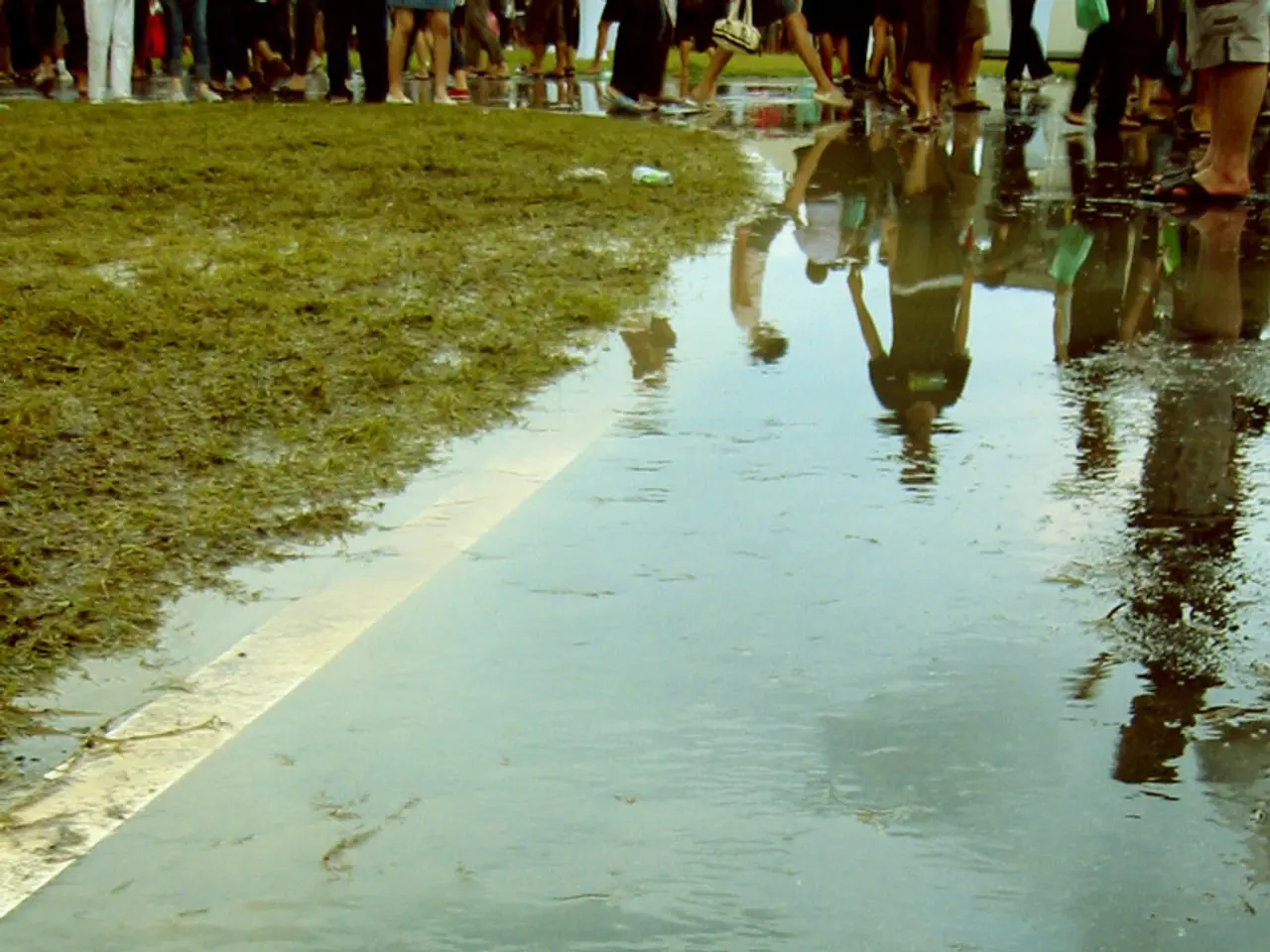Collecting Rainwater for Home-Based Water Safety
In the pursuit of sustainable living, rainwater harvesting has emerged as a viable solution for both homeowners and communities. This practice involves collecting and storing rainwater for various uses, from watering plants to flushing toilets.
For non-potable uses such as irrigation, laundry, and cleaning tasks, rainwater harvesting offers numerous benefits. By reducing the consumption of treated municipal water, it leads to significant cost savings and environmental benefits. Using rainwater for irrigation is healthier for plants as it is free from chemicals often found in treated water, and helps conserve potable water supplies.
Rain Wizard Rain Barrels, available in sizes of 40, 50, and 65 gallons, are a popular choice for rainwater collection. The Great American Rain Barrel, on the other hand, comes in a 60-gallon capacity. Both products are designed to efficiently collect and store rainwater for non-potable uses.
For those seeking a premium drinking water safe garden hose, a slim 7/16" diameter hose is available. This hose is ideal for transporting harvested rainwater for potable uses, especially in water-scarce or remote areas with limited access to safe drinking water.
The benefits of using harvested rainwater for both potable and non-potable uses are far-reaching. Conserving freshwater resources, reducing water bills, and recharging groundwater levels are just a few of the advantages. Rainwater harvesting also helps reduce pressure on municipal water systems, prevent urban flooding, control soil erosion, and provide water during shortages.
Additional benefits include lowering energy use related to water treatment and supply, reducing runoff pollution, and mitigating the urban heat island effect. Rainwater harvesting also supports groundwater recharge, improving long-term water availability and quality. It encourages community engagement in water management and increases resilience against water crises and bad monsoons or drought conditions.
In conclusion, harvesting rainwater is not just a means of enhancing water availability; it is a step towards sustainable water management. As global water stress is projected to increase by 2030, the need for such practices becomes increasingly important. By adopting rainwater harvesting, we can contribute to mitigating the global water stress challenge and promote a more sustainable future.
Embracing sustainable living, homeowners are considering the installation of rainwater collection systems for home-and-garden use. Using products like Rain Wizard Rain Barrels or The Great American Rain Barrel, they can efficiently store rainwater for non-potable uses, such as irrigation, laundry, and cleaning tasks.
By adopting these practices, they will not only witness cost savings and environmental benefits but also help in conserving potable water supplies and supporting community resilience in dealing with water crises, bad monsoons, or drought conditions. Furthermore, rainwater harvesting supports groundwater recharge, improving long-term water availability and quality, and encourages sustainable water management - a crucial step towards a sustainable future, especially with global water stress projected to increase by 2030.




